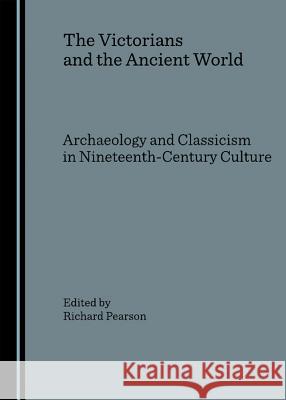The Victorians and the Ancient World: Archaeology and Classicism in Nineteenth-Century Culture » książka
The Victorians and the Ancient World: Archaeology and Classicism in Nineteenth-Century Culture
ISBN-13: 9781847180445 / Angielski / Twarda / 2006 / 231 str.
The Victorians and the Ancient World: Archaeology and Classicism in Nineteenth-Century Culture
ISBN-13: 9781847180445 / Angielski / Twarda / 2006 / 231 str.
(netto: 171,10 VAT: 5%)
Najniższa cena z 30 dni: 177,82 zł
ok. 30 dni roboczych
Bez gwarancji dostawy przed świętami
Darmowa dostawa!
In the nineteenth century, the ancient world became a very real presence for many writers and their publics, from the theatre-goers of popular pantomime to the intellectual thinkers in the academic and critical journals. The pre-eminence of the worlds of Greece and Rome was challenged by the discovery of Egyptian and Assyrian cultures, amongst other pre-Greek civilisations, and the worlds were brought to life in a series of high profile archaeological excavations and cultural exhibitions. Alongside the growing modernity of the Age of Steam, the whole of society was exposed to antiquity; architecture, painting, theatre, fiction and poetry, drew inspiration from the stories of the ancient writers, whilst the new museums and academies translated newly discovered languages and texts and excavated rediscovered ancient sites. The great civilisations, brimming with their own art and sculpted histories, were, however, contrasted by the traces of local, pre-civilised cultures of the West that existed before the coming of the Romans or in the Dark Ages immediately after their departure. The sense of a barbarity in man's past, a primitivism even, that may also be a survival into the modern age gradually grew in the Victorian mind as it uncovered the ancient sites of Britain and the prehistoric peoples of the Continent. It is during the post-Darwinian era of theories of social evolution, anthropology and ethnology that British and prehistorical archaeology began to find a public audience. This volume provides a series of readings from different disciplines that explore the presence of the ancient in nineteenth-century culture. The chapters demonstrate the range of the Victorian cultural preoccupation with civilisation and its primitive counterpoint and offer a combination of analyses of specific cultural events or traits, readings of particular Victorian texts and documents, and studies of exemplary Victorian figures and their personal engagements with antiquity. The book has been arranged to begin with archaeology and end with literary refashionings of the Classical, but the intertwinings of these elements in the Victorian period, as shown here, made the reaction to antiquity often an anxious and complex one.











